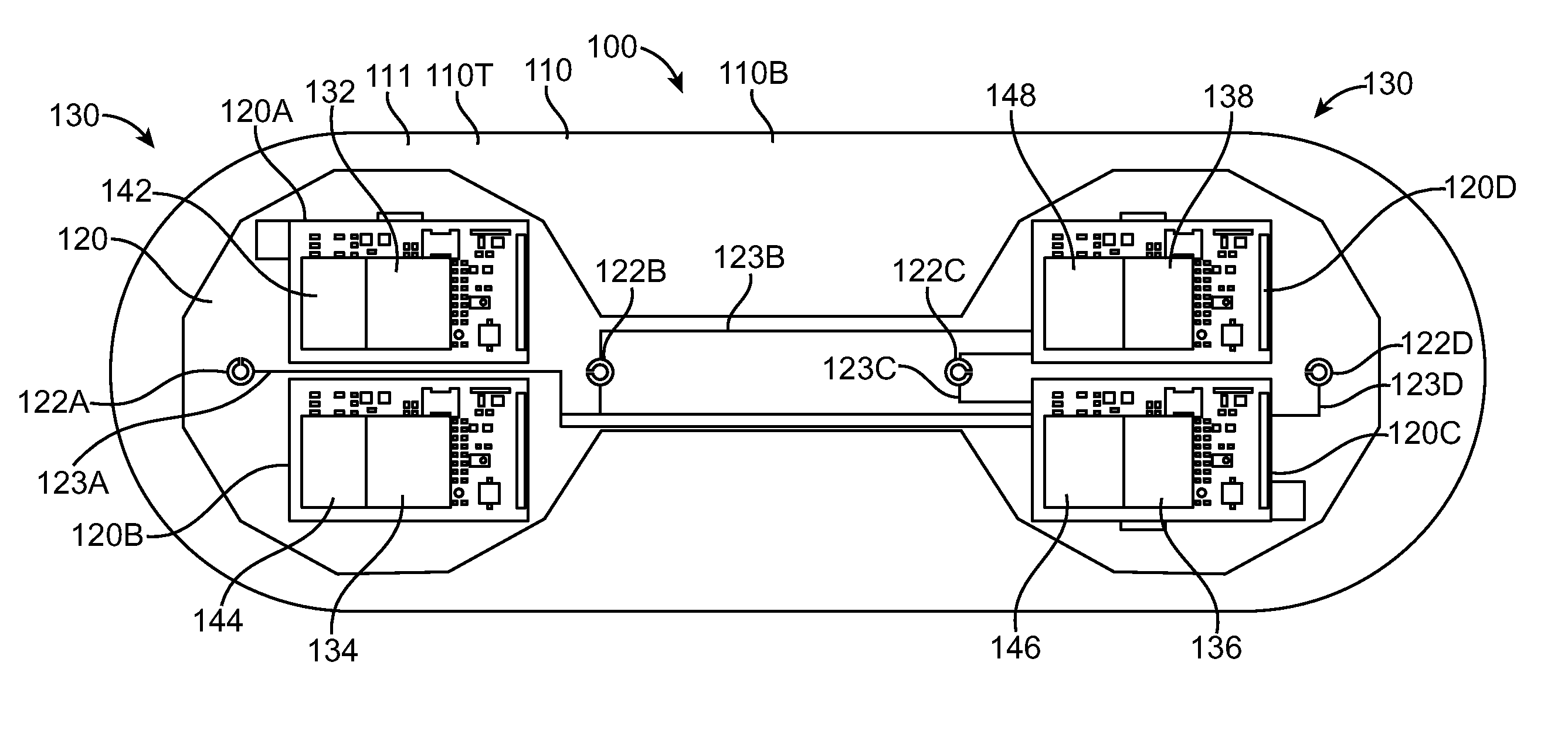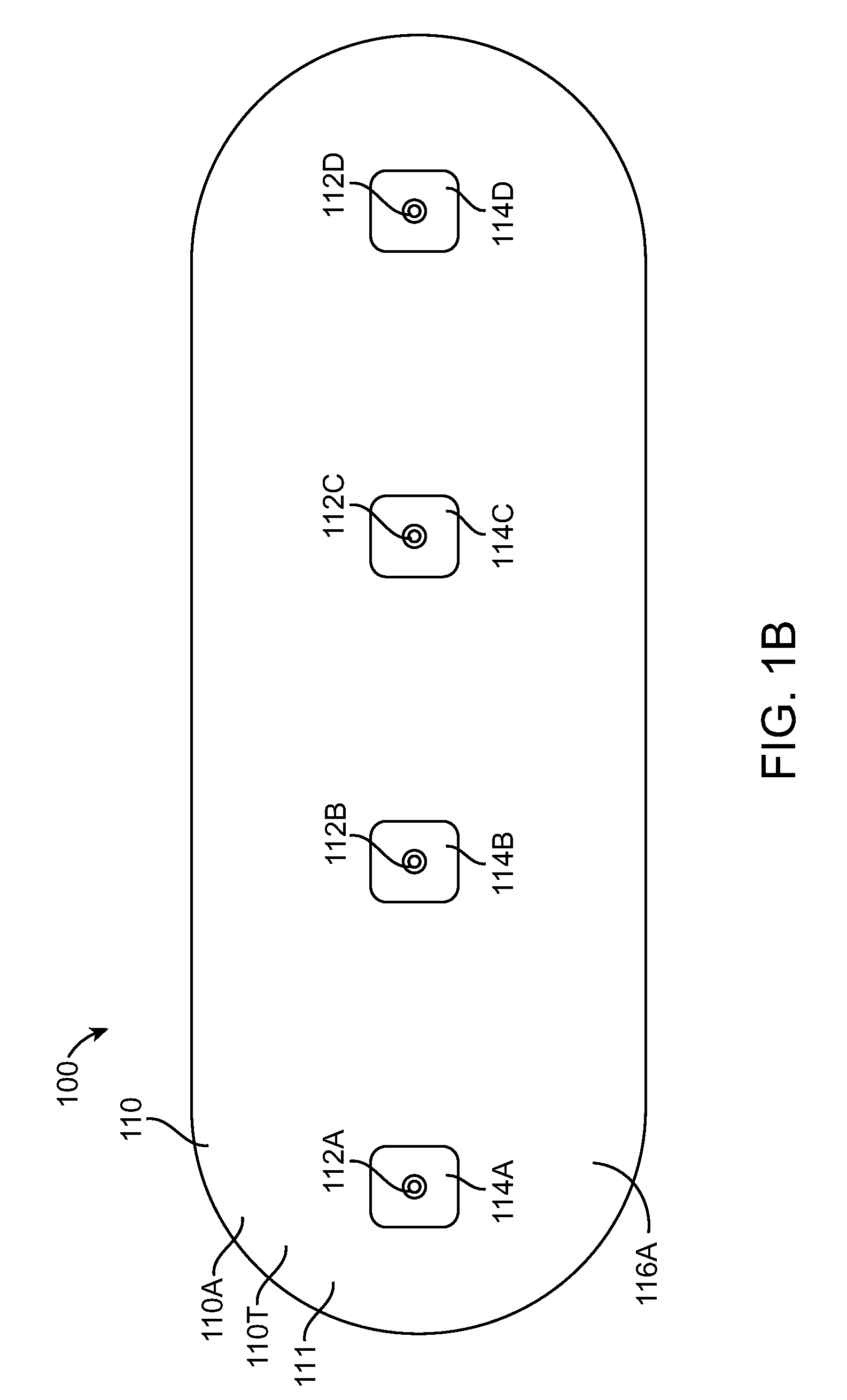Method and apparatus to measure bioelectric impedance of patient tissue
a bioelectric impedance and tissue technology, applied in the field of patient monitoring, can solve the problems of not accurately measuring the impedance, unable to provide as much accuracy, and the electronic devices used to measure the complex impedance signals of the patient may be somewhat larger than ideal, so as to minimize errors, eliminate a time-consuming step at manufacture, and minimize the memory resources of the controlling computer and/or processor
- Summary
- Abstract
- Description
- Claims
- Application Information
AI Technical Summary
Benefits of technology
Problems solved by technology
Method used
Image
Examples
Embodiment Construction
[0043]Embodiments of the present invention relate to patient monitoring. Although embodiments make specific reference to monitoring impedance and electrocardiogram signals with an adherent patch, the system methods and device described herein may be applicable to many application in which physiological monitoring is used, for example physiological monitoring with implantable devices.
[0044]In many embodiments, the adherent devices described herein may be used for 90 day monitoring, or more, and may comprise completely disposable components and / or reusable components, and can provide reliable data acquisition and transfer. In many embodiments, the patch is configured for patient comfort, such that the patch can be worn and / or tolerated by the patient for extended periods, for example 90 days or more. In many embodiments, the adherent patch comprises a tape, which comprises a material, preferably breathable, with an adhesive, such that trauma to the patient skin can be minimized while ...
PUM
 Login to View More
Login to View More Abstract
Description
Claims
Application Information
 Login to View More
Login to View More - R&D
- Intellectual Property
- Life Sciences
- Materials
- Tech Scout
- Unparalleled Data Quality
- Higher Quality Content
- 60% Fewer Hallucinations
Browse by: Latest US Patents, China's latest patents, Technical Efficacy Thesaurus, Application Domain, Technology Topic, Popular Technical Reports.
© 2025 PatSnap. All rights reserved.Legal|Privacy policy|Modern Slavery Act Transparency Statement|Sitemap|About US| Contact US: help@patsnap.com



